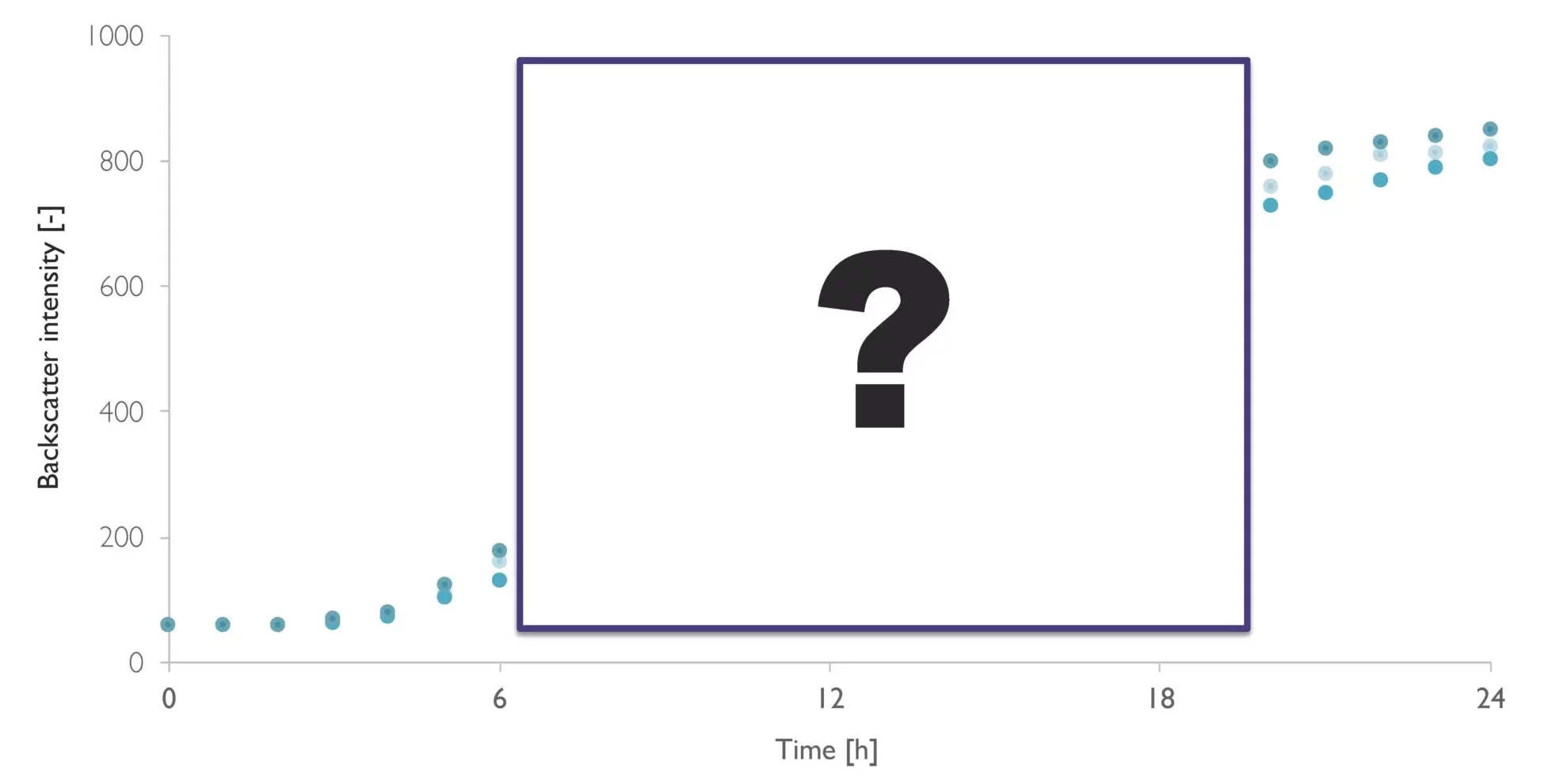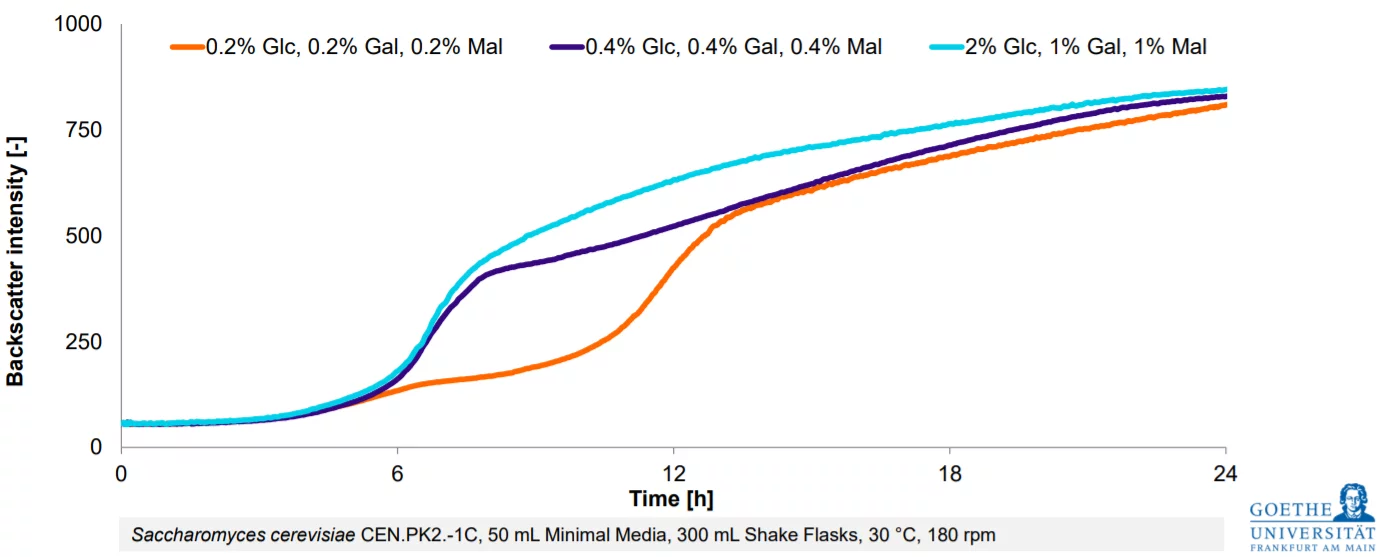Data Spotlight
Evaluation of Online Biomass, DO, and Fluorescence Monitoring in HEK Cell Cultivation
Background
Human Embryonic Kidney (HEK) cells are a widely used mammalian cell line in biotechnology and biomedical research. Originally derived from the kidney tissue of a human fetus in the 1970s, the most common variant—HEK293 cells—was created by transforming these cells with adenovirus DNA to improve their growth and transfection efficiency. HEK cells are especially valued for their ease of genetic manipulation, rapid growth, and ability to produce complex, properly folded human proteins with authentic post-translational modifications.
Their human origin and biological relevance make HEK cells an important tool for translating lab findings into therapeutic and clinical applications.
Compared to other cell lines such as CHO cells, HEK cells have a greater tendency to form aggregates, making it more challenging to maintain a homogeneous suspension. This presents specific challenges for bioprocessing and the use of sensor-based monitoring tools.
In this study, the Multiparameter Sensor (MPS) was employed to monitor dissolved oxygen, biomass, and fluorescence online. Offline measurements of cell count and fluorescence were also conducted and compared with the online data, showing good correlation between the two methods.
Results

A HEK cell culture was cultivated over 170 hours, during which dissolved oxygen (DO, blue) and biomass (backscatter signal, orange) were monitored online using the MPS. Offline cell counts were measured daily and are shown in grey.
The offline cell counts show good correlation with the online biomass measurements. The second-to-last measurement point, taken after 150 hours, is likely an outlier. This is suggested by the fact that the final data point realigns closely with the online measurements, making it improbable that cell density spiked significantly and then dropped again within just 20 hours. Furthermore, the DO signal begins to rise after approximately 110 hours, indicating a decline in metabolic activity and suggesting that cell growth has ceased—supporting the interpretation of the 150-hours offline data point as an outlier. As the offline measurements were conducted only once, without replicates, interpreting this anomaly is challenging and makes identifying an outlier more difficult. In this context, the availability of continuous online data such as biomass and DO proves especially valuable. Nevertheless, aside from this single deviation, the two measurement methods demonstrate strong agreement, supporting the reliability of backscatter readings for biomass determination in HEK cell cultures.
Fluorescence Monitoring in HEK Cell Cultures Facilitates the Tracking of Fluorescent Proteins
In addition to monitoring biomass and dissolved oxygen (DO), the MPS enables non-invasive, real-time measurement of fluorescence. In this experiment, HEK cells were transfected with green fluorescent protein (GFP), a widely used reporter in cell culture studies to assess transfection efficiency and confirm successful DNA uptake. Real-time access to fluorescence data is a valuable tool for tracking gene expression dynamics and greatly enhances the efficiency of cell culture experiments.
Using the same MPS device—easily positioned beneath a standard shake flask—all three parameters (biomass, DO, and fluorescence) were monitored continuously, providing high-resolution and reliable online data. To validate these measurements, offline analyses of cell counts and fluorescence were performed. The online and offline fluorescence data showed good agreement.
Slight discrepancies between online biomass readings and offline cell counts were observed during the later stages of cultivation. It is well established that factors such as changes in cell morphology or aggregate formation can influence backscatter signals, potentially affecting online biomass readings. While these effects are known, further assessment is required to determine the extent to which they contribute to the slight discrepancies observed between online biomass measurements and offline cell counts during the later stages of cultivation. It is likely that the online biomass signal reflects more than just cell number; however, it still reliably captures the overall growth trend of the HEK culture. This supports the use of the MPS as a robust and informative tool for real-time monitoring of HEK cell cultures.
Materials & Methods
For the cultivation of HEK cells, 250 mL Corning flasks were used with a filling volume of 30%. Cultures were shaken at 140 rpm with a shaking diameter of 25 mm, and maintained at a temperature of 39°C. Biomass was determined by monitoring the backscatter signal with the Multiparameter Sensor (MPS) on the center bin 29 at 622 nm. The signal was divided by 130 for depiction purposes.
In the second experiment, biomass was monitored with the MPS on the center bin 29 at 465 nm. Online fluorescence with the MPS was measured at an excitation of 465 nm and an emission of 555 nm on bin 29. Offline fluorescence signals were determined in the plate reader at an excitation wavelength of 480 nm and an emission wavelength of 509 nm.
Conclusion
This study demonstrates the effective use of the Multiparameter Sensor (MPS) for real-time, non-invasive monitoring of HEK cell cultures in 250 mL Corning flasks. HEK cells, known for their tendency to aggregate more than other cell lines like CHO, present unique challenges in maintaining homogeneous suspensions and ensuring accurate bioprocess monitoring. Despite these challenges, the MPS successfully captured high-resolution data on dissolved oxygen, biomass, and fluorescence, correlating well with offline measurements of cell counts and fluorescence.
A discrepancy between online and offline biomass measurements was observed toward the end of the cultivation. The online biomass signal showed an unexpected increase despite no actual cell growth. This is likely due to cells breaking down into smaller particles that scatter light more effectively, causing the backscatter signal to rise even as viable cell numbers remain constant or decline. Morphological changes during late cultivation stages also influence the backscatter signal, which means that although backscatter provides a higher data density and detects such morphological alterations, it cannot fully replace traditional cell counts. Nevertheless, the overall trend of cell growth is well reflected by the backscatter signal.
Additionally, the ability to monitor fluorescence online in real-time provides a valuable tool for tracking transfection efficiency and gene expression.
Together, these findings validate the MPS as a reliable and versatile sensor platform, capable of enhancing process understanding and control in HEK cell cultivation, thereby supporting improved bioprocess development and monitoring strategies.
This research was conducted by:
J. Steffen and M. Lauer

Have questions about your application?
Let’s work together to find a solution that works best for you.
From Estimation To High-Resolution Growth Curves


Customer Success Stories
.png)
-Kitana Manivone Kaiphanliam (Washington State University)

